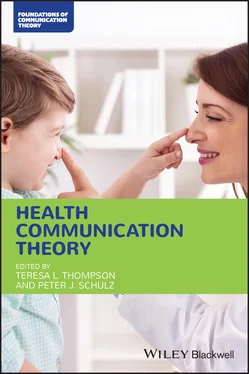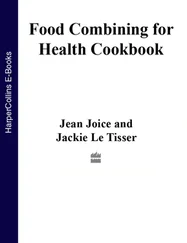Grounded theory – in various guises – is an especially popular and fruitful approach to research in health contexts and by health communication scholars. Originally developed in the 1960s by medical sociologists Barnie Glaser and Anselm Strauss studying the experiences of hospitalized dying patients, the first conceptualization of grounded theory has been recast by other scholars from different paradigms over the years. The basic steps have remained similar across these formulations; however, significant variability continues to exist in the understanding and application of grounded theory principles and practices within and beyond health communication.
Research methods and theory development are intimately connected in the grounded theory approach with researchers placing particular emphasis on the comparative process . Indeed, Glaser and Strauss (1967) originally claimed that the “strategy of comparative analysis for generating theory puts a high emphasis on theory as process; that is, theory as an ever‐developing entity, not as a perfected product” (p. 32). As researchers gather data, they compare new data to existing data, sort those data into meaningful and related categories, and then expand or alter existing categories as needed for theoretical sampling. This process of constant comparison occurs at every step of the research process as scholars compare and refine data and emerging findings. Researchers also consult extant research throughout data gathering and analysis, using it to make sense of emic (participant) categories and drawing relationships to etic (researcher and theoretical) ideas that may be used as sensitizing concepts for further analysis. These comparisons occur within an evolving study design in which research questions are shifted, added, or deleted as initial findings prompt new forms of data or additional data from new participants. Ideally, the goal is to abstract categories into a single statement of theory; however, most health communication research stops short of new theory generation, offering useful typologies, extensions to current theory, or pragmatic implications for improving communication instead (Ellingson and Borofka 2014).
Glaser and Strauss (1967) introduced grounded theory as a way to develop theories from research rather than deduce testable hypotheses from existing theories. This traditional systematic formulation was steeped in the tenants of positivism pervading social sciences at the time and focused on discovering themes that emerged naturally and dispassionately from the data. They originally believed that (i) theory is embedded in and emerges from the data; (ii) researchers should remain objective during data collection and analysis (and even save the literature review until after analysis to ensure a blank slate); and (iii) even without one truth, research can capture a semblance of reality in the data and present that reality as a set of theoretical findings (Corbin 2009). Later, Strauss broke from Glaser and, with his colleague Juliet Corbin, recast grounded theory in a post‐positivist vein. Their evolved conceptualization (Strauss and Corbin, 1990) acknowledged the researcher’s more active role in generating themes while still emphasizing validity checks and systematic procedures for doing so.
More recently, medical sociologist Kathy Charmaz (2006) situated grounded theory within social constructionism, contending that researchers create both data and analysis from shared experiences and relationships with participants and other sources of data, including the researcher’s own perspectives, positions, and privileges. Unlike earlier conceptualizations of grounded theory, she claimed that theories do not emerge from the data but are instead constructed through the researcher’s past and present participation in the social world. Constructivist grounded theorists take a reflexive stance toward the research process and products to consider how theories evolve from shared meanings and situated practices. From this perspective:
Theorizing means stopping, pondering, and thinking afresh. We stop the flow of studied experience and take it apart. To gain theoretical sensitivity, we look at studied life from multiple vantage points, make comparisons, follow leads, and build on ideas… The acts involved in theorizing foster seeing possibilities, establishing connections, and asking questions.
(Charmaz 2006, p. 244; emphasis in original)
This approach explicitly assumes that any theoretical rendering offers an interpretive portrayal – rather than an exact picture – of the studied world (Charmaz 2006, p. 17). While all approaches to grounded theory can be found in health communication literature, the post‐positivist and social constructionist types are far more common than the original conceptualization, paralleling larger trends in qualitative methodology (Ellingson and Borofka 2014).
With roots in medical sociology and nursing, grounded theory has had meaningful impacts on health‐related research. Within health communication, Ellingson and Borofka (2014) cited three specific strengths of this approach. First, they claimed that grounded theory highlights participant voices and experiences through categories grounded in participant perspectives. For example, Donovan‐Kicken et al. (2012) grounded their analysis in 40 cancer survivors’ descriptions of the demands, obligations, and preparatory activities involved in discussing their illness. From these results, they then theorized the construct of communication work, which focuses on the labor and resources devoted to managing talk while living with illness. In another study, Peterson (2010) grounded her analysis in descriptions of the challenges that 45 women living with HIV or AIDS face while seeking and receiving social support. The research served as an initial step toward the development of a normative model of social support for women living with HIV.
Second, Ellingson and Borofka (2014) noted that grounded theory “often generates pragmatic, heuristic implications for improving communication within a variety of health contexts that, while not generalizable, are widely applicable and useful” (p. 538). For example, Martin’s (2016) study of the experience and communicative management of identity threats among 47 people with Parkinson’s disease offered insights that could be utilized in healthcare and interventions for combating identity loss and responding to identity challenges in adaptive ways. In another study, Ellingson (2007)’s ethnography of a dialysis unit yielded implications for several areas of health communication research, including improved staff training and delivery of care, further articulation of the relationship between communication and technology in contemporary healthcare, and the development of models of nursing leadership.
Finally, Ellingson and Borofka (2014) claimed grounded theory in health communication research “produces findings rich in contextual and interactional details that complement and contextualize other qualitative, critical, and quantitative analyses” (p. 538). To illustrate, critical health communication scholars have paired grounded theory with (i) the culture‐centered approach (see Chapter 14) to reveal enrollment disparities among African Americans and hospice care (Dillon and Basu 2016); (ii) media framing to elaborate tensions that emerge within the discursive space of HIV/AIDS in Indian newspapers (de Souza 2007); and (iii) functional theories of stigma to acknowledge the role of medical power, discrimination, and authority in healthcare encounters with transgender patients (Poteat, German, and Kerrigan 2013). Further, as a well‐known health communication scholar specializing in feminist and grounded theory methodologies, Laura Ellingson has advocated for studies that embrace a continuum approach across social science methodologies. From this approach – which Ellingson (2009) deemed crystallization – grounded theory, which is typically represented in traditional research report genres, can be creatively paired with more artistic representation, including photovoice techniques (e.g. Evans‐Agnew, Boutain, and Rosemberg 2017) and poetic transcription (e.g. Ellingson 2011).
Читать дальше












